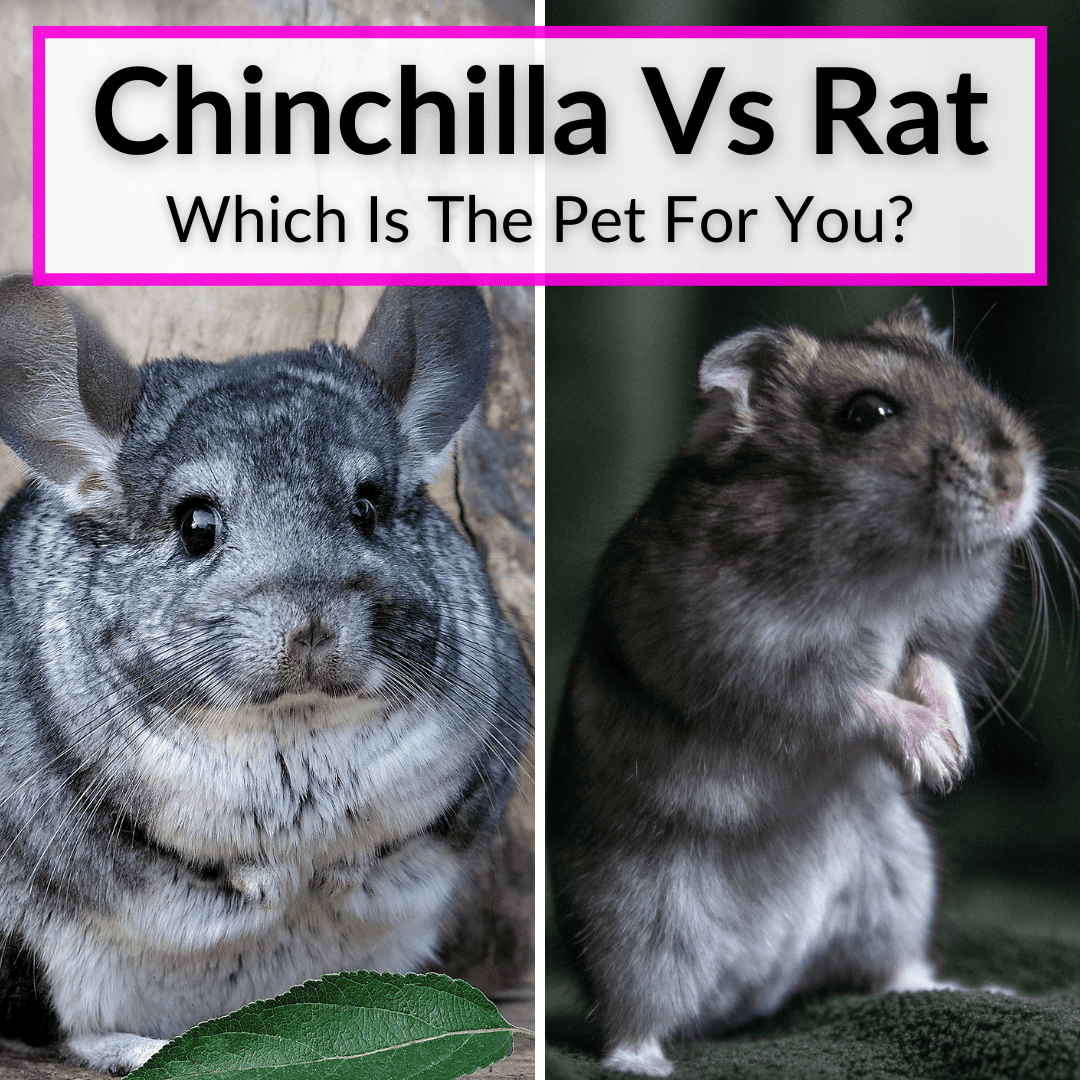
As such, they have a number of things in common.
But when you compare the chinchilla vs rat as pets, you’ll find more differences than similarities.
For one, most people see the chinchilla as cuddly and the rat as disgusting.
Rats just don’t have a good reputation.
But the truth is, they can make good pets. As good as chinchillas?
Well, I’m a bit biased, as you may guess from the name of this site.
But I will put that bias aside and compare these two rodents fairly. Keep reading to learn if the chinchilla or the rat would make a better pet for you.
Contents
- 1 Chinchilla Vs Rat
- 2 Chinchilla Vs Rat As Pet: Final Thoughts
Chinchilla Vs Rat
We will begin our comparison of the chinchilla and the rat as pets by looking at each animal individually, before comparing them directly. Then we will look at the advantages of each, before going into the type of person who is best suited as a pet owner for each species.
The Chinchilla
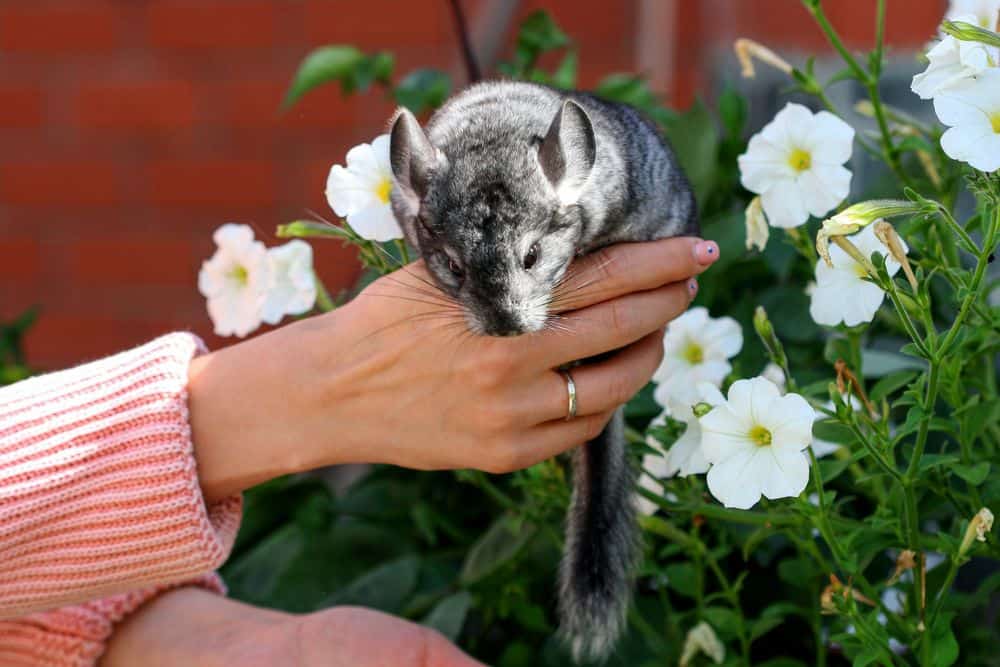
Chinchillas are cute rodents that look like squirrels, but are slightly larger and more robust than the common ground squirrel. They are native to the Andes Mountains in South America, where they are hunted for their famously soft fur.
The word chinchilla comes from Chincha – a tribe that lived in the Andes and wore the animal’s soft velvety fur.
Chins, as they are fondly known, measure about 9-16 inches with long bushy tails measuring about 3 to 6 inches. They weigh about 1 to 1.76 pounds, with females being slightly larger and heavier than males.
There are two varieties of chinchillas: long-tail and short-tail. Their lifespan averages 8 to 10 years.
These days, breeders have started breeding chinchillas in captivity. This has increased their numbers dramatically. More and more people are keeping exotic pets like chinchillas.
The Rat
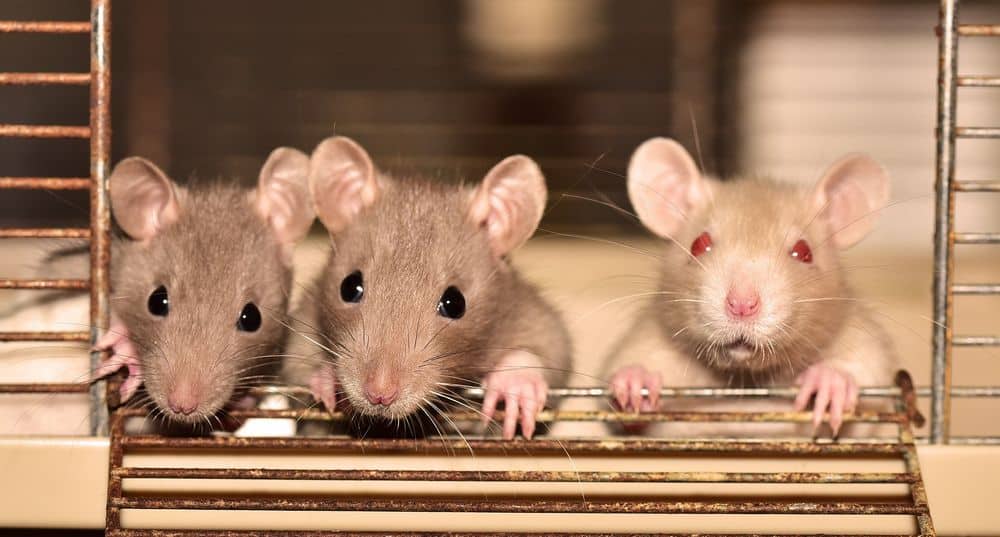
Many people balk at the idea of keeping rats as pets, because most consider them to be vermin or pests. In reality, rats are greatly misunderstood animals that can make soothing companions.
They are quiet, and clean, and do not need much grooming, expensive special food, or daily walks. Rats bred as pets are calm and docile. They do not bite humans, unlike many other rodent species.
Rats are even capable of comforting humans emotionally. No wonder, a recent survey showed that almost 10,000 Americans are keeping pet rats. Most pet rats measure between 300 and 600 grams. Their average lifespan is 3 to 5 years.
Differences Between Chinchillas And Rats
There are a number of major differences between chinchillas and rats. We will begin with the most obvious at first glance.
Appearance
Despite both being rodents, rats and chinchillas do not look alike. Chinchillas look more like squirrels. They have rounded bodies, long round ears, and bushy tails. Their fur is velvety soft and thick. Most chinchillas are grey in color.
Rats, on the other hand, have smaller ears, pointed snouts, and thin, furless tails. They do not have thick furry coats like chinchillas. Rats are also come in a variety of colors like brown, white, black, etc.
Habitat
Chinchillas are only found in the Andes mountains, where they enjoy a cool, arid habitat. Rats are found all over the world, mostly in basements, kitchens, sewers, and drains. They are highly adaptable animals that can live in almost any environment.
Behavior
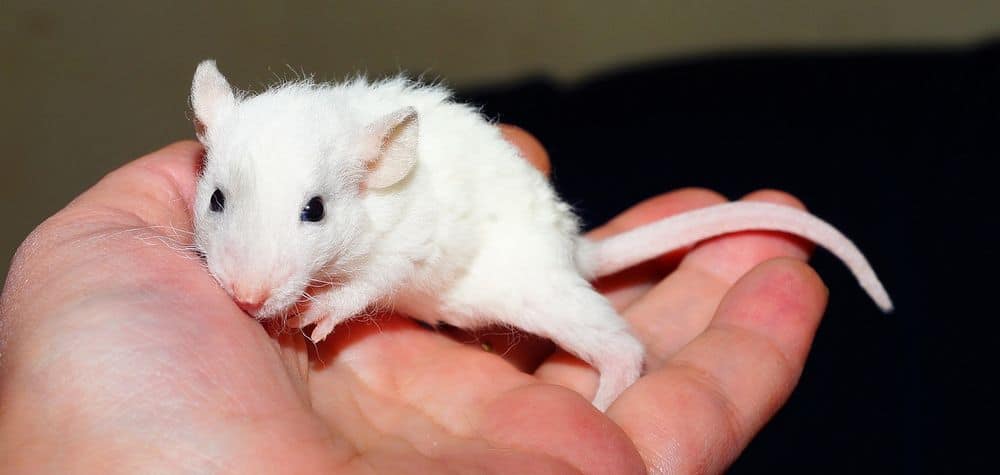
Chinchillas bred in captivity are calm, timid, and docile. They make good pets but they also don’t like being handled too much. They even tend to bite their handlers, especially if they aren’t trained to be held.
Rats – bred as pets – make excellent pets and most like being held. They are even capable of forming strong bonds with their humans. Many rats are trainable and even learn to perform tricks.
Diet
Chinchillas are mainly herbivores. In the wild, they eat grass, roots, berries, fruits, flowers, leaves, stems, and barks. Sometimes, they may eat insects, but they primarily need grass and hay to survive.
In captivity, you can feed them a commercial pelleted diet along with a steady supply of hay and occasional fruits and vegetables. Chinchillas’ diets need to be low in fat and high in fiber.
Rats are omnivores and eat almost everything. They need both plant and animal matter. In captivity, you can feed rats grains, seeds, cooked chicken and eggs, fruit, and vegetables.
Lifespan
Rats usually have shorter lifespans than chinchillas. When it comes to chinchilla age, in captivity they are known to live for 10 to 20 years. Some even live longer than 20 years. Rats usually live for 3 to 5 years.
Similarities Between Chinchillas And Rats
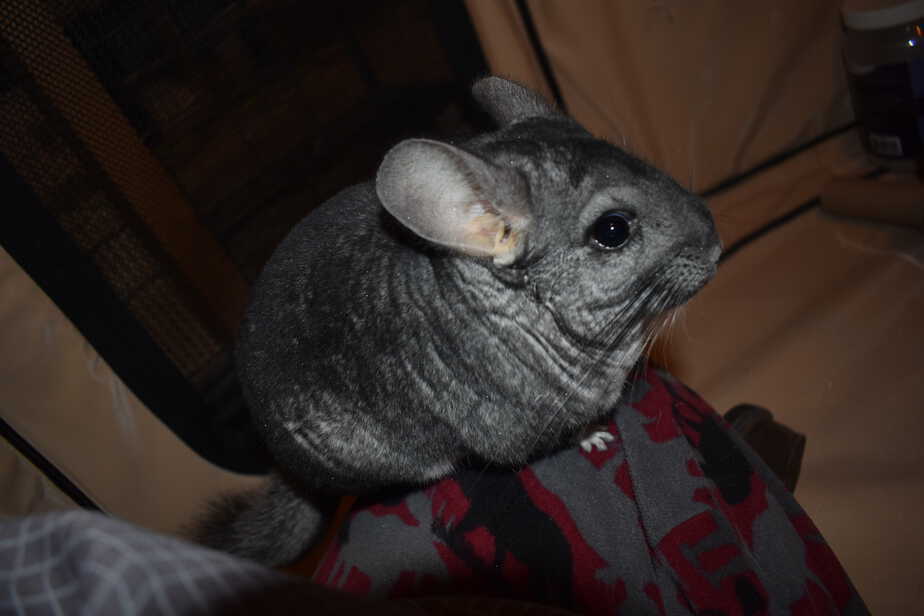
Chinchillas and rats are both furry rodents that make excellent pets. Here are some more similarities between the two.
Sociability
Chinchillas and rats are both social by nature. They need the company of their own kind. They may even bond with their humans.
Constantly Growing Teeth
Rats and chins both need to chew and munch on food and hard items to wear down their constantly growing teeth. Both pets also need proper oral care to maintain their dental health.
Reproduction
Both animals are prolific breeders. They can have multiple litters each year.
Health Issues
Some health issues common in both animals are respiratory infections, diseases or infections of the foot pad, skin issues, dental problems, mammary tumors, and digestive issues.
Exercise Needs
Both pets need plenty of mental and physical stimulation. They are intelligent animals and need toys, running wheels, or obstacle courses in the form of tunnels, ladders, and perches to keep them active and entertained.
Advantages Of Chinchillas As Pets
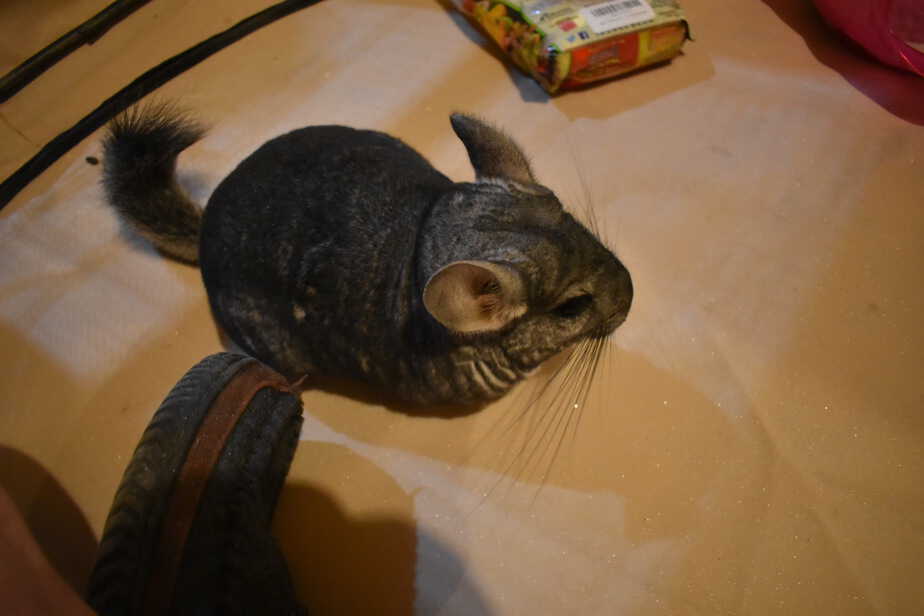
Chinchillas live longer than rats. They are also adorable, cuddly, and cute to look at. They are exotic and rare, which adds to their charm and allure. Your pet chinchilla is sure to be a great conversation starter at parties.
These entertaining pets can also be great fun to take care of. Chins are generally quiet and do not make too much noise. They are ideal for small spaces and do not need daily baths or walks.
Chinchilla fur is hypoallergenic and won’t trigger allergies in sensitive individuals. However, their dust bath powders could trigger allergy symptoms.
Advantages Of Rats As Pets
Rats are low-maintenance pets. They do not need baths, grooming, or daily walks. Unlike chinchillas, they do not need weekly dust baths.
They also do not need special diets and eat almost everything. These factors make them excellent pets for people on tight budgets. Rats are sociable and intelligent and you can even train them to perform simple tricks. Pet rats can also form loving bonds with their humans.
Who Should Get A Pet Chinchilla
Chinchillas are ideal pets for:
- People with experience in keeping small-sized pets like hamsters, gerbils, etc.
- Someone who is gentle and patient, since chinchillas usually take time in getting used to being handled. They need to be treated gently and calmly during this phase.
- Someone who has the time to spot-clean their chin’s cage daily and deep clean it weekly.
- Pet owners who don’t mind spending on special chinchilla baths, commercial pellets food, daily fresh hay, and regular exotic vet visits.
- A pet owner who can commit to the care of their chinchilla for the next 8 to 12 years.
Who Should Get A Pet Rat
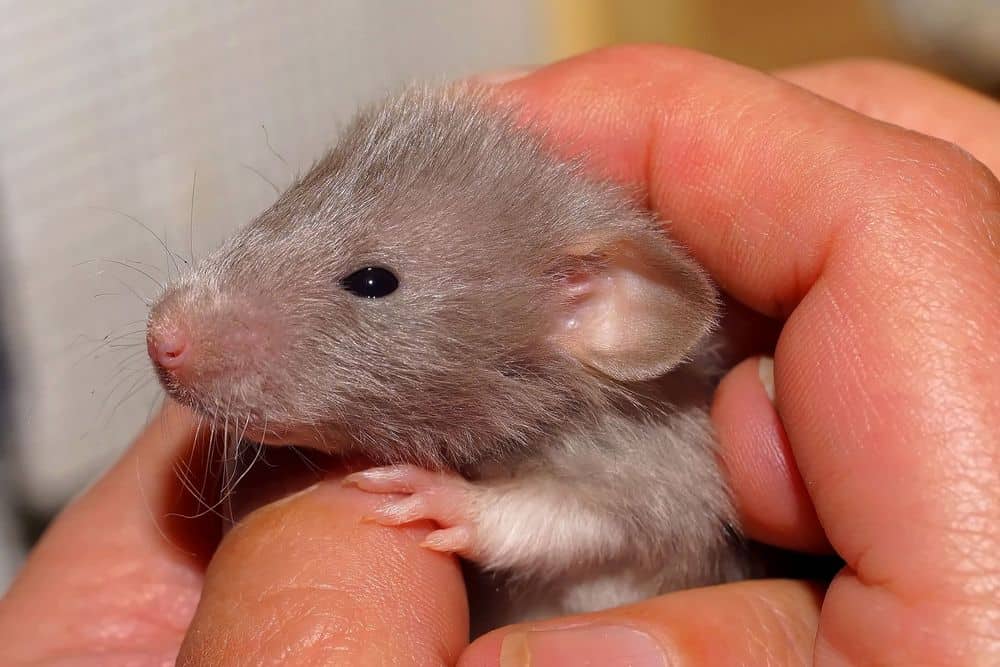
Rats make excellent pets for:
- A first-time owner who does not have any prior experience with small pets.
- Someone on a budget – rats are low-maintenance and do not need special food or expensive vet visits.
- Pet owners with busy schedules. Rats are ideal, since they don’t need too much attention, aside from feeding and an hour of daily playtime.
- Someone who does not want to spend too much time cleaning their pet’s cage.
- Someone who wants a fun and easy-going pet that can provide hours of entertainment.
- A pet owner who is emotionally strong to deal with their pet’s relatively short lifespan.
Chinchilla Vs Rat As Pet: Final Thoughts
Chinchillas and rats both make great pets. As a chinchilla owner, it is clear which rodent I prefer. But when you compare the chinchilla vs rat, you realize that each species has distinct advantages and disadvantages.
The result is that for most people, one of these rodents will make a better pet than the other. Which one is better depends on your wants and needs. Hopefully the above comparison helped you figure out which pet is right for you.
And if you don’t think either is right for you, the hedgehog might make a good third option. It is also cute and exotic, but quite different from these two rodents. For more, read my comparison of hedgehogs and chinchillas. Another possibility is the sugar glider. We compare the chinchilla vs sugar glider here.
Katie at Meadowia says
If you’re looking for a low-maintenance, cuddly companion, a chinchilla might just be the perfect pet for you!